
Researchers at Duke Health have found that surgically joining the circulatory systems of young and old mice, a process known as heterochronic parabiosis, slows cellular aging and extends the lifespan of older mice by up to 10%. The longer the mice shared circulation, the more enduring the anti-aging effects, revealing the potential of young blood’s components to rejuvenate the old, improve physiological abilities, and extend life.
The more extended the period that the animals shared circulatory systems, the more sustained the benefits were to the older mouse.
A process of surgically joining the circulatory systems of a young and old mouse has been found to slow aging at a cellular level and extend the older animal’s life by as much as 10%.
Recently published in Nature Aging, a study led by researchers from Duke Health discovered the longer the animals shared circulation, the longer the anti-aging benefits lasted once the two were no longer connected.
The findings suggest that the young benefit from a cocktail of components and chemicals in their blood that contribute to vitality, and these factors could potentially be isolated as therapies to speed healing, rejuvenate the body, and add years to an older individual’s life.
“This is the first evidence that the process, called heterochronic parabiosis, can slow the pace of aging, which is coupled with the extension in lifespan and health,” said senior author James White, Ph.D., assistant professor in the departments of Medicine and Cell Biology at Duke University School of Medicine and the Duke Aging Center.
White and colleagues set out to determine whether the benefits of heterochronic parabiosis – surgically fusing two animals of different ages to enable a shared circulatory system – were fleeting, or more long-lasting.
Earlier studies at Duke and elsewhere documented anti-aging benefits in tissues and cells of older mice after three weeks of parabiosis. These studies found that the older mice became more active and animated, and their tissue showed evidence of rejuvenation.
“Our thought was, if we see these anti-aging effects in three weeks of parabiosis, what happens if you bring that out to 12 weeks,” White said. “That’s about 10% of a mouse’s lifespan of three years.”
White said the ages of the mice were also important, with the young mouse aged four months, and the older mouse aged two years.
With follow-up during a two-month detachment period, the older animals exhibited improved physiological abilities and lived 10% longer than animals that had not undergone the procedure.
At the cellular level, parabiosis drastically reduced the epigenetic age of blood and liver tissue and showed gene expression changes opposite to aging, but akin to several lifespan-extending interventions such as calorie restriction.
The rejuvenation effect persisted even after two months of detachment.
In human terms, the parabiosis exposure would be the equivalent of pairing a 50-year-old with an 18-year-old for about eight years, with the effects adding eight years to the person’s lifespan.
White said the experiment was designed to study if long-term exposure to young blood will cause lasting effects in the old mouse. Pairing humans for heterochronic parabiosis is obviously not practical or even ethical, he said. He also noted that other anti-aging strategies, such as calorie restriction, work better to extend longevity in mice.
“Our work points to a need to explore what factors in the circulation of youthful blood cause this anti-aging phenomenon,” White said. “We have demonstrated that this shared circulation extends life and health for the older mouse, and the longer the exposure, the more permanent the changes.
“The elements that are driving this are what’s important, and they are not yet known,” White said. “Are they proteins or metabolites? Is it new cells that the young mouse is providing, or does the young mouse simply buffer the old, pro-aging blood? This is what we hope to learn next.”
Reference: “Multi-omic rejuvenation and lifespan extension on exposure to youthful circulation” by Bohan Zhang, David E. Lee, Alexandre Trapp, Alexander Tyshkovskiy, Ake T. Lu, Akshay Bareja, Csaba Kerepesi, Lauren K. McKay, Anastasia V. Shindyapina, Sergey E. Dmitriev, Gurpreet S. Baht, Steve Horvath, Vadim N. Gladyshev and James P. White, 27 July 2023, Nature Aging.
DOI: 10.1038/s43587-023-00451-9
In addition to White, study authors include Bohan Zhang, David E. Lee, Alexandre Trapp, Alexander Tyshkovskiy, Ake T. Lu, Akshay Bareja, Csaba Kerepesi, Lauren K. McKay, Anastasia V. Shindyapina, Sergey E. Dmitriev, Gurpreet S. Baht, Steve Horvath, and Vadim N. Gladyshev.
The study was funded by the National Institutes of Health.

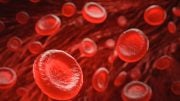
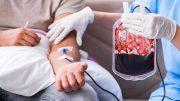
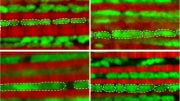

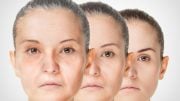
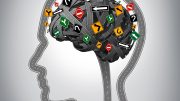
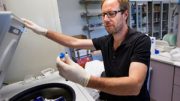
Those with the financial means will of course be watching & no doubt ‘aging specialists’ will be finding donors of young blood to use for their wealthy patrons – going on already no doubt !!!
This research has been done numerous times dating back to 2014.
https://www.google.com/search?client=firefox-b-1-d&q=benefits+of+sharing+blood+flow+between+young+mouse+and+old+mouse
Some comcluded it benefited the older mouse and others did not.
Why doesn’t the study say anything about the lifespan of the young mouse?
Would it work with blood transfusions with younger donated blood?